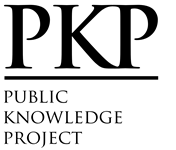Analysis of the relationship between primary productivity, phytoplankton abundance and nutrients in Cengklik Reservoir, Boyolali
Abstract
Cengklik Reservoir is a reservoir that has many benefits for the surrounding community such as irrigation and aquaculture, namely Floating Net Cages. FNC in these waters can have an impact on the remaining feed produced in cultivation. The rest of the feed can cause increased nutrient concentrations and eutrophication in the waters. These impacts can affect water quality conditions, phytoplankton abundance and primary productivity. The purpose of this study was to determine the primary productivity, abundance of phytoplankton, nitrate (NO3) and orthophosphate (PO4) in Cengklik Reservoir, Boyolali. The study was conducted in March 2023. The sampling point determination method uses Stratified Random Sampling with four stations in two repeats. Data processing using simple and multiple linear regression analysis with Jamovi application. The results obtained gross primary productivity value is 62.50 – 156.25 mgC/m3/hour while net primary productivity is 31.25 – 93.75 mgC/m3/hour. The abundance of phytoplankton results the most in the Cyanophyceae class with a percentage of 50.72% - 65.06%. The relationship between phytoplankton abundance and gross primary productivity is obtained R2 = 0.142 while net primary productivity R2 = 0.608 which means that the relationship of phytoplankton abundance affects the production of net primary productivity in waters. The relationship between nitrate and phosphate analysis with phytoplankton abundance in waters R2 = 0.311 which means that nitrate and orthophosphate have a low influence on phytoplankton abundance. The abundance of phytoplankton in waters can be influenced by other factors.
Keywords: Cyanophyceae; Nitrate; Orthofosfat; Phytoplankton
Full Text:
PDFReferences
APHA (American Public Health Association). 2005. Standard Methods for The Examination of Water and Wastewater 21 Edn. Wangshinton (US): APHA, AWWA, WPCF.
Arbianti, P., Nurrachmi, I., dan Efriyeldi, E. 2017. Sebaran Nitrat, Fosfat dan Kelimpahan Fitoplankton di Muara Sungai Kampar Kabupaten Pelalawan. Jurnal Perikanan dan Kelautan, 22(2): 1-9.
Aprianto, T.R., Simarmata, A.H., dan Dahril, T. 2020. Produktivitas Primer Berdasarkan Metode Oksigen di Danau Tuok Tonga Desa Buluh Cina Kecamatan Siak Hulu Kabupaten Kampar Provinsi Riau. Jurnal Sumberdaya dan Lingkungan Akuatik, 1(1): 40-51.
Hendrawan, A.K.F., Afiati, N., dan Rahman, A. 2021. Laju Nitrifikasi Pada Bioremediasi Air Limbah Organik Menggunakan Chlorella Sp. dan Bakteri Nitrifikasi-Denitrifikasi. Jurnal Pengelolaan Sumberdaya Alam dan Lingkungan (Journal of Natural Resources and Environmental Management), 11(2): 309-323.
Ismunarti, D.H. 2013. Analisis Komponen Utama Pada Hubungan Distribusi Spasial Komunitas Fitoplankton dan Faktor Lingkungan. Ilmu Kelautan, 18(1): 14-19.
Ngatno. 2015. Buku Ajar Metodelogi Penelitian Bisnis. Lembaga Pengembangan dan Penjaminan Mutu Pendidikan, Universitas Diponegoro. Semarang.
Odum, E.P. 1993. Dasar-Dasar Ekologi. Gadjah Mada University Press, UGM. Yogyakarta.
Odum, E.P. 1971. Fundamental of Ecology. Third Ed.W.B. Saunders Company, Philadelphia. Page 574.
Padang, A. 2012. Peranan Diatom Bagi Produktivitas Primer di Lingkungan Bentik. J Bimafika, 4(1): 420-424.
Panggabean, L.S., dan Prastowo, P. 2017. Pengaruh Jenis Fitoplankton Terhadap Kadar Oksigen di Air. JBIO: jurnal biosains (the journal of biosciences), 3(2): 81-85.
Priadana S., dan Sunarsi, D. 2021. Metode Penelitian Kuantitatif. Pascal Books. Tangerang Selatan. 220 hal.
Pitoyo, A., dan Wiryanto, W. 2002. Primary Productivity of the Cengklik DAM Boyolali. Biodiversitas Journal of Biological Diversity, 3(1): 189-195.
Purina, I., Labucis, A., Barda, I., Jurgensone, I., dan Aigars, J. 2018. Primary Productivity in the Gulf of Riga (Baltic Sea) in Realtion to Phytoplankton Species and Nutrient Variability. Oceanologia, 60(1): 544-552.
Rahayu, S.M., Damar, A., dan Krisanti, M. 2022. Perbedaan Konsentrasi Nitrat dan Intensitas Cahaya Terhadap Laju Pertumbuhan Diatom Chaetoceros Muelleri. Acta Aquatica: Aquatic Sciences Journal, 9(2): 95-100.
Sianipar, E.D., Siagian, M., dan Simarmata, A.H. 2015. Nitrate Concentration from the Water around the Folating Cage Fish Culture Area and from the Area with No Cage, in the DAM Site PLTA Koto Panjang. Jurnal Online Mahasiswa Bidang Perikanan dan Ilmu Kelautan, 2(1): 1-11.
Sunaryo, A. 2017. Produktivitas Primer Di Waduk Ir. H. Juanda Kabupaten Purwakarta Propinsi Jawa Barat. Jurnal Penyuluhan Perikanan dan Kelautan, 11(2): 110-120.
Sofarini, D. 2012. Keberadaan Dan Kelimpahan Fitoplankton Sebagai Salah Satu Indikator Kesuburan Lingkungan Perairan di Waduk Riam Kanan. EnviroScienteae, 8(1): 30-34.
Umaly, R.C., and Cuvin, L.A. 1988. Limnology: Laboratory and Field Guide Physico-Chemical Factors, Biology Factors. National Book Store Publ., Manila. 179.
Vollenweider, R.A., Giovanardi, F., Montanari, G., dan Rinaldi, A. 1998. Characterization of the trophic conditions of marine coastal waters with special reference to the new adriatic sea: proposal for a trophic scale, turbidity and generelized water quality index. Eniviromental Journal, 9: 329-357.
Wetzel, R.G. 1983. Limnology. Saunder Company. Philadelphia.
DOI: https://doi.org/10.29103/aa.v11i2.12597
 Article Metrics
Article Metrics
 Abstract Views : 240 times
Abstract Views : 240 times
Refbacks
- There are currently no refbacks.
Copyright (c) Acta Aquatica: Aquatic Sciences Journal

This work is licensed under a Creative Commons Attribution 4.0 International License.









